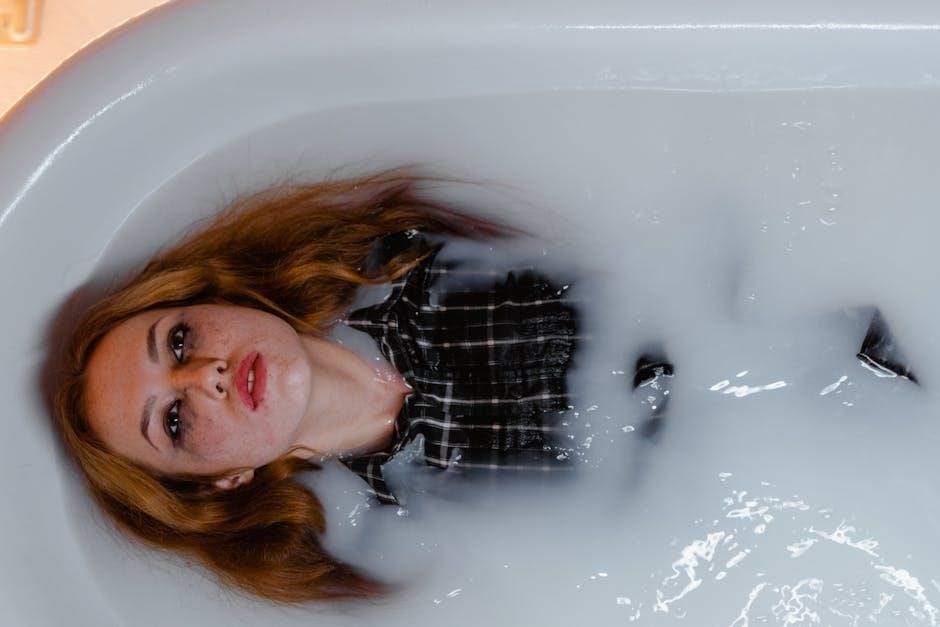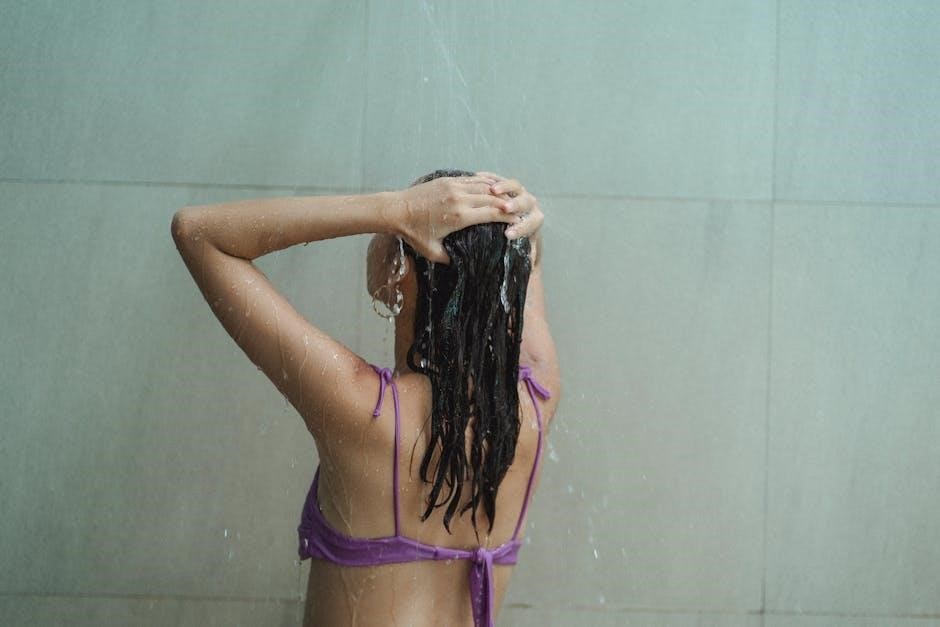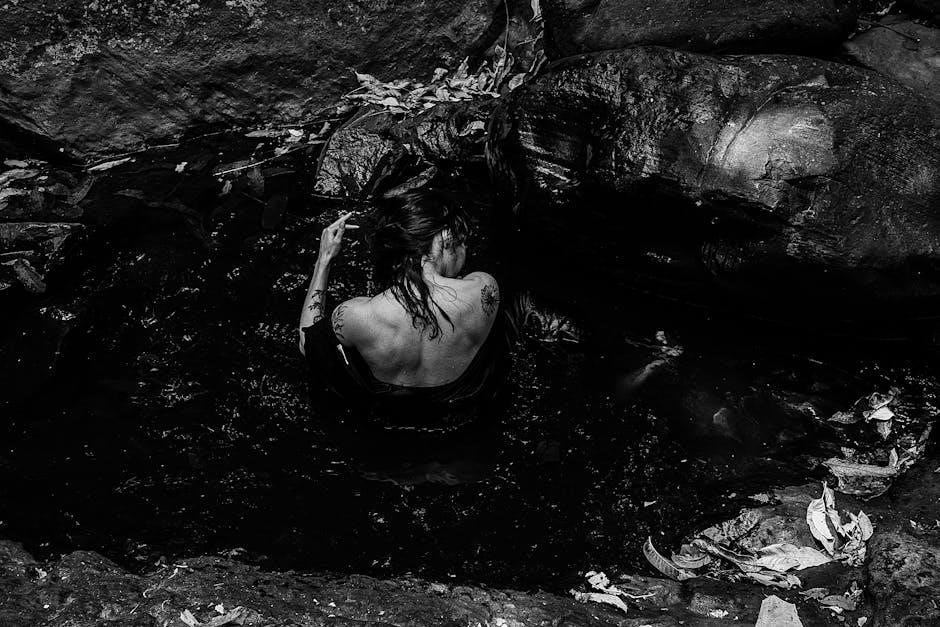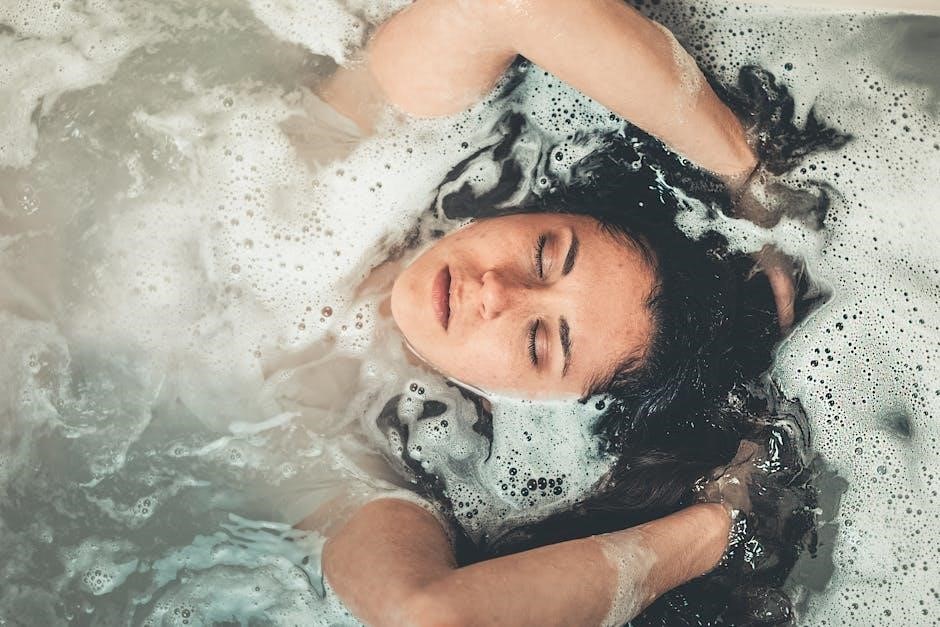What is a Bleach Bath for Hair?
A bleach bath is a gentler hair lightening technique compared to traditional bleaching. It involves diluting bleach with shampoo, reducing its strength. This method is ideal for fading color or correcting dye jobs, widely used by salon professionals for a milder approach.
Why Choose a Bleach Bath?
Opting for a bleach bath offers several advantages. It’s gentler than full bleaching, minimizing damage, especially for fragile hair. It’s also effective for color correction, fading existing dye, and achieving a lighter shade without the full commitment of traditional bleaching methods.
Less Damaging Alternative
A significant advantage of a bleach bath lies in its reduced harshness compared to a full bleach treatment. By diluting the bleach with shampoo, the chemical’s potency is lessened, minimizing potential damage to the hair shaft. This makes it a preferable option for individuals with delicate or previously treated hair, as it gently lifts color without causing excessive dryness, breakage, or compromising the overall health and integrity of the hair. It allows for gradual lightening.
Color Correction and Fading
Bleach baths are effective for color correction and fading unwanted tones in the hair; If a dye job has resulted in a color that is too dark or uneven, a bleach bath can gently lift the color, creating a more desirable shade. It’s also useful for removing stubborn traces of old hair dye. It helps to fade vibrant colors before applying a new color, providing a cleaner canvas for the desired result;
Bleach Bath Recipe and Ratios
The bleach bath recipe involves mixing bleach powder, developer, and shampoo. The ratio depends on the desired lightening. Adjusting these ratios allows for customized results, ensuring gentle color removal. This allows you to lighten with great control.
General Recipe: 1:2:3 Ratio
The general bleach bath recipe follows a 1:2:3 ratio. This consists of one part bleach powder, two parts developer, and three parts shampoo mixed with water. This foundational ratio provides a balanced approach, diluting the bleach to minimize damage while still effectively lifting color. This ratio is a good starting point for most hair types and desired levels of lightening. Experimentation is key!
Adjusting Ratios for Desired Lightening
To adjust the ratios for desired lightening, consider your hair’s condition and color. For gentler lightening, increase the shampoo ratio, diluting the bleach further. For stronger lightening, slightly reduce the shampoo ratio, but be cautious to prevent damage. Always monitor your hair closely during the process, adjusting the mixture as needed to achieve the desired level of lift while minimizing potential harm to the hair strands.

Preparatory Steps Before Bleach Bath
Before a bleach bath, clarify your hair to remove buildup. Avoid washing hair for a few days beforehand, allowing natural oils to protect your scalp. This ensures even lightening and minimizes potential irritation.
Clarifying Shampoo Use
Prior to a bleach bath, using a clarifying shampoo is crucial. This type of shampoo effectively cleanses the hair, removing any buildup from products like styling gels, hairsprays, and oils. By eliminating these residues, the clarifying shampoo ensures that the bleaching chemicals can properly penetrate the hair shaft. This step optimizes the lightening process, leading to more even and predictable results. A clean foundation allows for better color absorption and reduces the risk of uneven patches or discoloration during the bleach bath.
Avoiding Hair Washing Beforehand
To prepare your hair for a bleach bath, it’s best to avoid washing it for at least 3 days, ideally up to 7 days, before the treatment; This allows natural oils to accumulate on the scalp and hair. These natural oils act as a protective barrier, shielding the scalp from the harsh chemicals in the bleach. This protective layer can help minimize irritation and reduce the potential for damage to the hair during the lightening process, ensuring a more comfortable and safer experience.

Bleach Bath Application Process
When applying a bleach bath, start with damp hair for even distribution. Begin at the ends, working upwards, avoiding the scalp initially. Use a wide-tooth comb to ensure thorough coverage, then clip the hair up and cover it.
Application on Damp Hair
Applying the bleach bath to damp hair is crucial for even product distribution. Damp hair allows the diluted bleach mixture to spread more easily, ensuring uniform lightening. This also helps to prevent hot spots or uneven color lifting. Make sure hair is not soaking wet, just slightly damp for optimal application and consistent results throughout the entire process. This ensures a gentler and more controlled lightening experience.
Starting at Ends and Working Up
Begin applying the bleach bath mixture at the ends of your hair, working your way up towards the roots. The ends typically require more lightening as they are often more processed and may have more color buildup. Leaving the roots for last allows for even lightening, as the roots process faster due to the heat from the scalp. Use a wide-tooth comb to ensure thorough and even distribution, promoting a seamless blend.
Developing Time and Monitoring
Closely monitor hair during the developing time, checking every few minutes. This ensures desired lightness is achieved without over-processing. Developing time varies depending on hair color, condition, and bleach strength.
Checking Hair Every Few Minutes
During the developing time, it’s crucial to check your hair every 5-10 minutes. Scrape away a small amount of the bleach mixture from a strand to visually assess the color. This allows you to monitor how quickly your hair is lightening and prevent over-processing. Remember, gradual lightening is preferred to maintain hair health. If the desired lightness is achieved before the maximum time, rinse immediately. This proactive monitoring ensures you achieve your desired result while minimizing potential damage.
Maximum Developing Time
Regardless of how slowly your hair is lightening, it is crucial to adhere to a maximum developing time. Generally, this should not exceed 45 minutes. Over-processing can lead to significant damage, breakage, and even scalp irritation. Even if the desired level of lift hasn’t been achieved, rinsing after 45 minutes is vital to protect your hair’s integrity. You can always repeat the process after a few weeks rather than risk irreversible damage.

Rinsing and Post-Bleach Bath Care
After the developing time, rinse your hair thoroughly with cool water until all traces of the bleach mixture are gone. Follow with a moisturizing shampoo and a deep conditioner to replenish lost moisture. Consider using a protein treatment to help rebuild the hair’s structure. Avoid heat styling for a few days and use leave-in conditioners or hair oils to keep your hair hydrated and protected. Proper post-bleach bath care is essential to maintain hair health and prevent damage.

Bleach Bath on Different Hair Shades
When performing a bleach bath, different hair shades react uniquely. Black hair requires multiple sessions, while red or brown hair may develop orange tones. Understanding these nuances is crucial for achieving desired results and managing potential color changes.
Black Hair Considerations
When considering a bleach bath for black hair, it’s essential to recognize that this hair color presents unique challenges due to its depth of pigment. Achieving significant lightening typically requires multiple bleach bath sessions spread over several weeks. A single procedure may not yield the desired outcome, necessitating repeated applications to gradually lift the color.
Using a clarifying shampoo beforehand can help lighten the hair and remove buildup, aiding in the overall lightening process, but patience is key.
Dealing with Red or Brown Hair
When using a bleach bath on red or brown hair, understand that these hair colors often have underlying warm tones that can be revealed during the lightening process. A common issue is the appearance of orange tones after the bleach bath. This can result from the specific pigment composition of the hair or mineral buildup.
To counteract this, toners or toning shampoos can be employed. For orange tones, a toning shampoo is typically recommended, while toners are better suited for yellow tones, aiding in neutralizing unwanted warmth.
Addressing Brassy or Orange Tones
After a bleach bath, brassy or orange tones can appear. This is common due to underlying pigments in the hair. Toner or toning shampoo can help neutralize these unwanted tones for a cooler result.
Using Toner or Toning Shampoo
After a bleach bath, unwanted brassy or orange tones might surface. To combat this, toner or toning shampoo can be used. Toner is better for yellow tones, while toning shampoo is designed for orange hues. Apply according to product instructions. This will help neutralize the unwanted warmth, leaving you with a cooler, more desirable blonde or lightened shade. Choose products specifically designed for color-treated hair to maintain its health and vibrancy. Regular use of purple shampoo can also help maintain the tone over time.
Repeating the Bleach Bath
If a single bleach bath doesn’t achieve the desired lightness or remove enough of the unwanted tones, repeating the process might be necessary. However, it’s crucial to wait at least two weeks before attempting another bleach bath to minimize damage. Use a lower volume developer (20 or 10) to be gentle on your hair. Deep condition regularly between treatments. Monitor your hair’s condition closely and discontinue if you notice excessive dryness, breakage, or damage. Consider consulting a professional stylist for guidance if you’re unsure.
Frequency and Damage Considerations
Bleach baths, while gentler, can still cause damage. The frequency should be limited to avoid over-processing hair. Using protective measures like coconut oil can help minimize damage, but moderation is key to maintaining healthy hair.
How Often to Bleach Bath
The frequency of bleach baths depends on your hair’s condition and desired results. Generally, it’s best to wait at least a few weeks between bleach baths to allow your hair to recover. Over-processing can lead to damage, so assess your hair’s health and strength before repeating the process. If your hair feels dry or brittle, postpone the next treatment and focus on hydration and repair. Remember, patience is key to achieving your desired color without compromising your hair’s integrity.
Minimizing Damage with Coconut Oil
To minimize damage during a bleach bath, consider using coconut oil as a pre-treatment. Apply coconut oil generously to your hair at least an hour before the bleach bath, or even overnight. Coconut oil penetrates the hair shaft, helping to protect it from the harsh effects of bleach. It can reduce protein loss and keep hair moisturized. Don’t rinse the oil out before applying the bleach mixture; it acts as a barrier, lessening the impact of the chemicals.
Bleach Bath Results
Typically, a bleach bath lightens hair by about one level. For more significant lightening, repeat the process or use a stronger mixture. After a bleach bath, hair cuticles lift, making it ideal for dyeing.
Levels of Lift Achieved
On average, a single bleach bath typically lifts the hair one shade lighter. The extent of lightening can vary based on individual hair characteristics. To achieve a more pronounced effect, you might consider repeating the procedure or adjusting the strength of the bleach bath mixture. Remember, the goal is gradual lightening, prioritizing hair health and minimizing potential damage.
Multiple applications, spaced appropriately, can help you reach your desired shade while keeping your hair in good condition, but never overdo it.
Dyeing Hair After a Bleach Bath
Yes, dyeing your hair after a bleach bath is generally recommended. The bleach bath process lifts the hair cuticles to remove pigment. Applying a new dye helps to seal these cuticles, contributing to hair health and color retention. Ensure you choose a dye that complements your desired final shade.
This process effectively closes the hair shaft, leaving your hair smoother and more vibrant. Dyeing after a bleach bath is ideal for achieving your desired look.
DIY Bleach Bath vs. Salon
Choosing between a DIY bleach bath and a salon treatment depends on your experience and comfort level. Salons offer expertise and precision, minimizing the risk of damage or uneven results. Professionals can tailor the bleach bath to your specific hair type and desired outcome, ensuring a more predictable result.
DIY bleach baths can be cost-effective but require careful execution. If you’re confident in your abilities, a DIY approach is an option, but proceed with caution.
